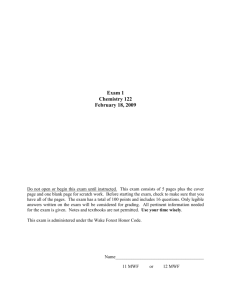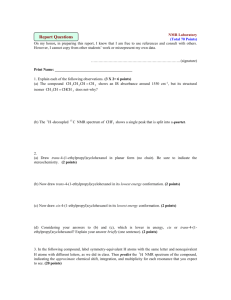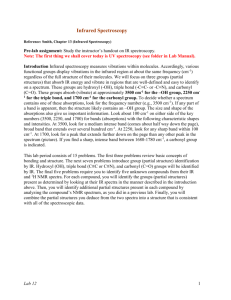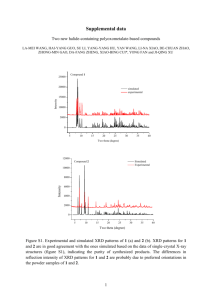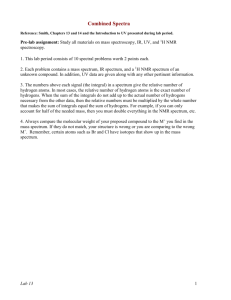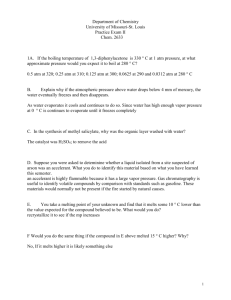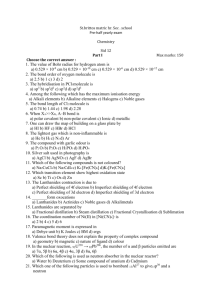lect8
advertisement
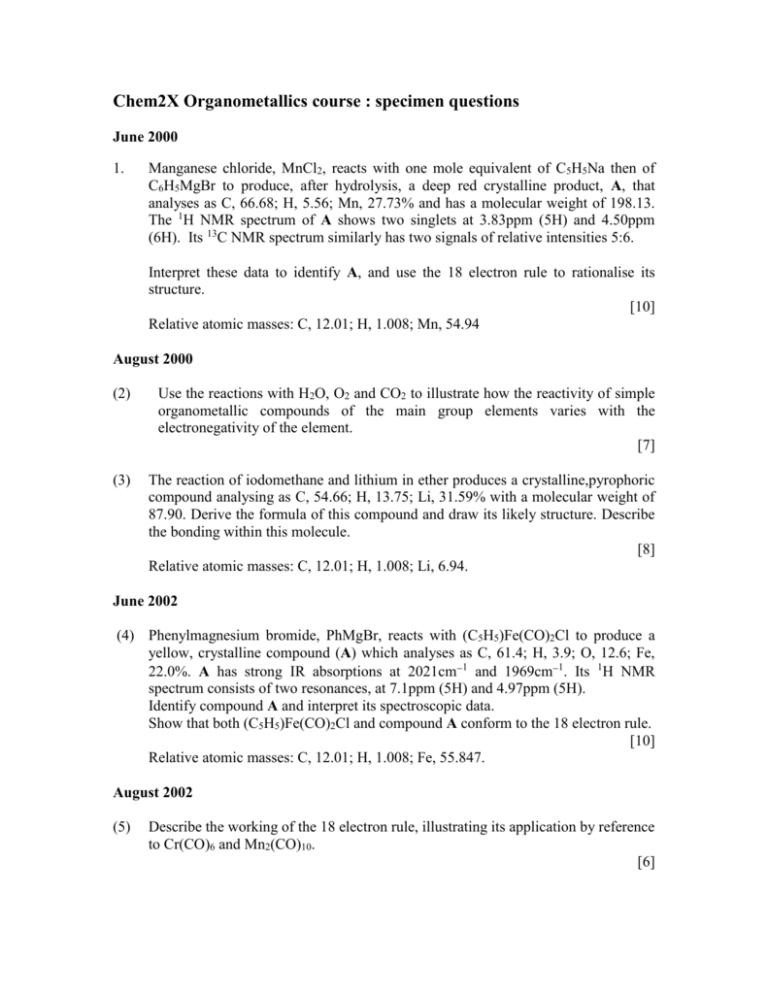
Chem2X Organometallics course : specimen questions June 2000 1. Manganese chloride, MnCl2, reacts with one mole equivalent of C5H5Na then of C6H5MgBr to produce, after hydrolysis, a deep red crystalline product, A, that analyses as C, 66.68; H, 5.56; Mn, 27.73% and has a molecular weight of 198.13. The 1H NMR spectrum of A shows two singlets at 3.83ppm (5H) and 4.50ppm (6H). Its 13C NMR spectrum similarly has two signals of relative intensities 5:6. Interpret these data to identify A, and use the 18 electron rule to rationalise its structure. [10] Relative atomic masses: C, 12.01; H, 1.008; Mn, 54.94 August 2000 (2) Use the reactions with H2O, O2 and CO2 to illustrate how the reactivity of simple organometallic compounds of the main group elements varies with the electronegativity of the element. [7] (3) The reaction of iodomethane and lithium in ether produces a crystalline,pyrophoric compound analysing as C, 54.66; H, 13.75; Li, 31.59% with a molecular weight of 87.90. Derive the formula of this compound and draw its likely structure. Describe the bonding within this molecule. [8] Relative atomic masses: C, 12.01; H, 1.008; Li, 6.94. June 2002 (4) Phenylmagnesium bromide, PhMgBr, reacts with (C5H5)Fe(CO)2Cl to produce a yellow, crystalline compound (A) which analyses as C, 61.4; H, 3.9; O, 12.6; Fe, 22.0%. A has strong IR absorptions at 2021cm1 and 1969cm1. Its 1H NMR spectrum consists of two resonances, at 7.1ppm (5H) and 4.97ppm (5H). Identify compound A and interpret its spectroscopic data. Show that both (C5H5)Fe(CO)2Cl and compound A conform to the 18 electron rule. [10] Relative atomic masses: C, 12.01; H, 1.008; Fe, 55.847. August 2002 (5) Describe the working of the 18 electron rule, illustrating its application by reference to Cr(CO)6 and Mn2(CO)10. [6] (6) Nitric oxide, NO, is a paramagnetic gas. It readily displaces three of the carbonyl ligands of Fe(CO)5 to give the diamagnetic compound Fe(CO)2(NO)2. Explain why NO is paramagnetic, but its transition metal complexes are diamagnetic. Explain why NO so readily displaces CO. Does Fe(CO)2(NO)2 obey the 18 electron rule ? Give your reasons. [9] August 1999 (7) Explain the 18 electron rule and show how the following compounds adhere to this rule : Fe(C5H5)2 Co2(CO)8 and Cr(CO)3(C6H6). June 1998 (8) Free CO gas has (CO) at 2140 cm-1 in its IR spectrum. Crystalline Mn2(CO)10 has (CO) values near 2000 cm-1 but crystalline Co2(CO)8 has IR carbonyl absorptions near both 2000 cm-1 and 1800 cm-1. Relate these observations to the structure and bonding in the compounds. (9) Aluminium chloride reacts with methyl-lithium to produce a volatile liquid Y which spontaneously ignite in air and explodes in contact with water. Y analyses as C, 49.99; H, 12.58; Al, 37.43% and has a molecular weight of 144. (i) Identify Y and describe its structure and bonding (ii) Predict how Y would react with (a) ether and (b) ethanol Relative atomic masses, C, 12.011; H,1.008;, Al, 26.98 (10) Methyl-lithium (excess) reacts with SiCl4 to produce a colourless volatile and unreactive liquid X, which analyses as C4H12Si. The NMR spectrum of X consists of a singlet at 0 ppm. Identify X and suggest reasons for its inert behaviour.
